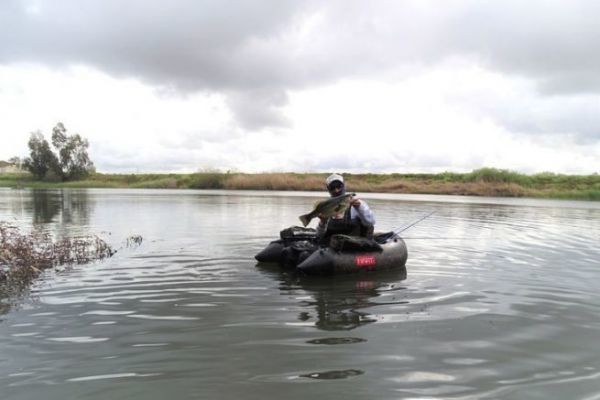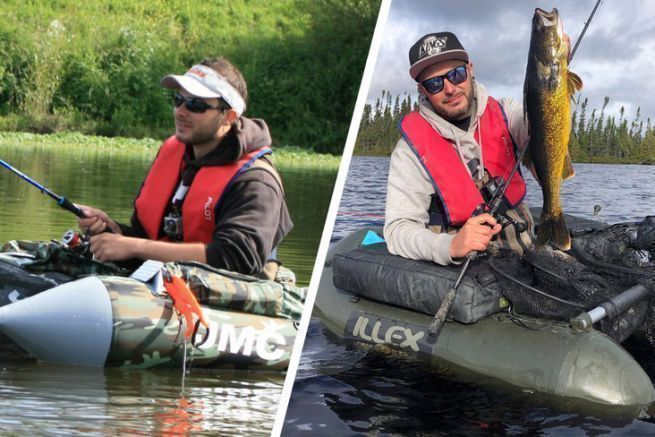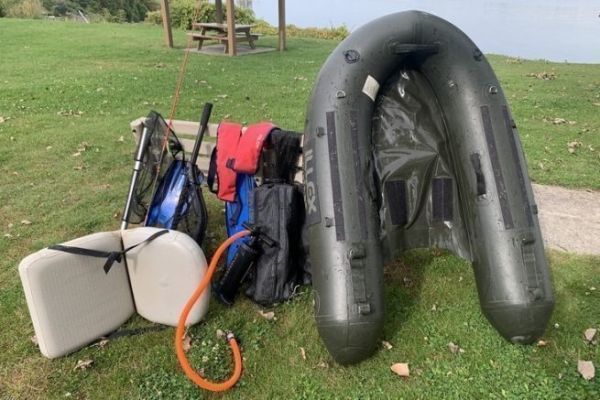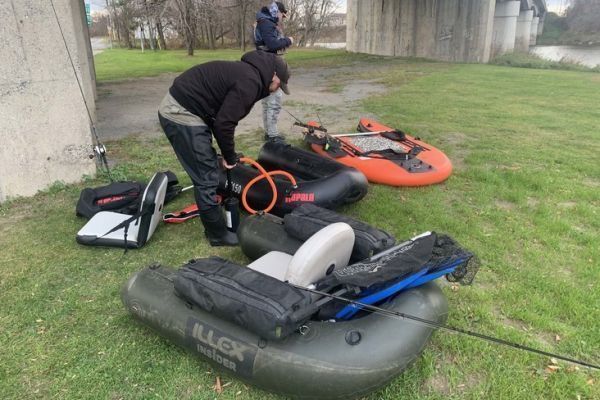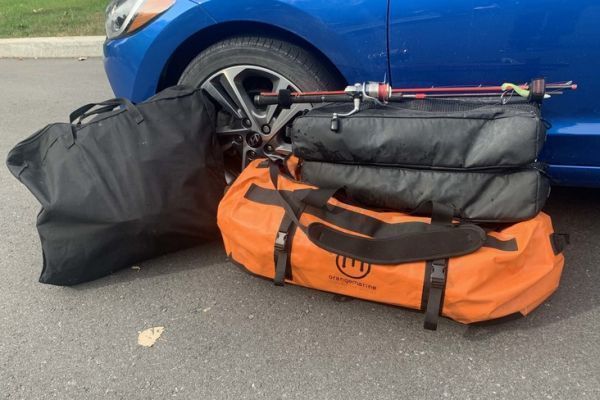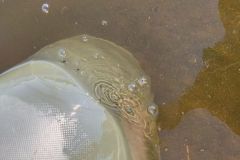1 - Know and respect the regulations
In France, even if the practice of float-tubing has been present for several years, the regulations which frame its practice are not always clear. Some prefectures or fishing federations have established regulations on the waters they manage, but this is not always the case and this can quickly change from one place to another.
In any case, you should always find out what the regulations are at the fishing site, but even without this, some rules, such as wearing a life jacket, are common sense.
2 - Navigate safely
On the water, you always have to keep an eye on your surroundings and adapt to the situation. Take into consideration the other users, the weather, the wind, the waves, the current... So many factors that can present a risk and to which you must adapt.
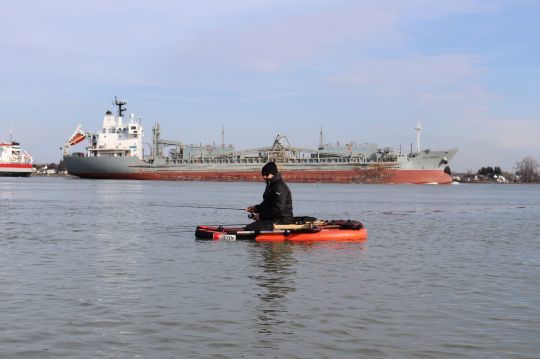
Moreover, the limited propulsion of a float-tube does not allow you to get out of a dangerous situation quickly, so you have to be able to act well in advance.
3 - Wear a life jacket
Concerning the flotation jacket, I don't recommend the foam models, often used for kayaking, because their back is not comfortable with the back of the float-tube.
It is therefore better to go for a self-inflating type jacket.
Its release mechanism can be manual, in which case it is necessary to pull on a rope, or automatic, in which case, when the lifejacket is immersed, it is released. For the latter, it is always necessary to keep in mind not to submerge the vest, to avoid an unexpected triggering. The inflation system of this type of vest has a life span, often of 5 years, and it is necessary to foresee the replacement of the gas cartridge, to make sure to always have a vest in the standards.
The vest can be chosen from different sizes and weights, depending on the size of the person.
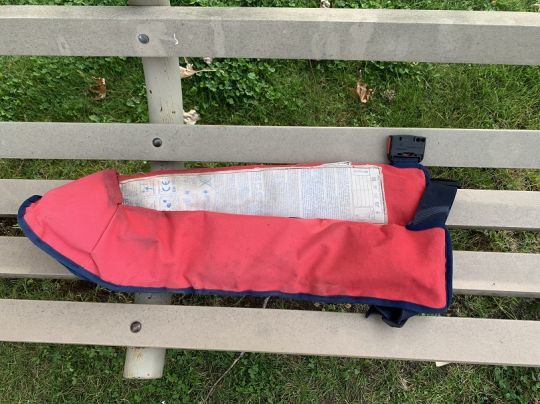
The sizes are often defined by M, L, XL, XXL, it is advisable to look at the precise dimensions and not to forget that this vest is worn over other clothing. The lift is expressed in Newton, just follow the manufacturer's recommendations to define the model you need.
Even if from an aesthetic point of view, the black color is more discreet to wear, from a safety point of view, especially to improve its visibility on the water, the red color seems to me to be the good choice.
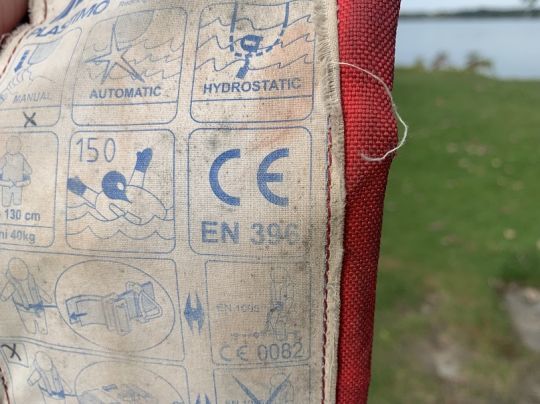
Finally, it is necessary to verify the conformity of the vest with the requirements of the country. In France, the CE marking must be present.
4 - Wearing waders
It is highly recommended to wear diving pants or waders for float-tubing. When the water is warm, it is tempting to wear a bathing suit, but this does not protect you from bacteria and diseases that can be found in the water. In addition, prolonged immersion of the lower body can cause skin problems.
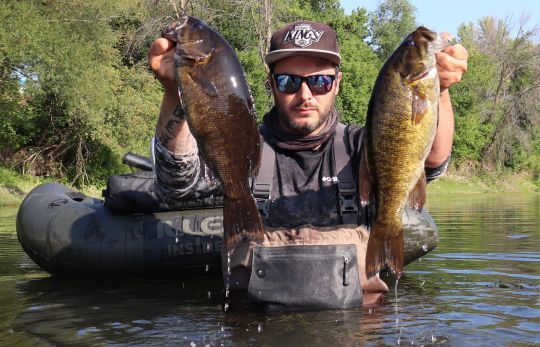
In order to avoid any health concerns, it is therefore important to wear a waterproof suit.
5 - Maintaining your boat
When you are on your float-tube, you have to be attentive to leaks, especially if you realize that at the end of the day, the float-tube has deflated. In this case, you should not wait and repair the leak as soon as possible, in order to avoid that it gets bigger.
6 - Safety accessories
In order to face an unexpected event, such as a rollover, a collision with a boat or an obstacle, a flat tire... It is advisable to always carry a minimum of security.
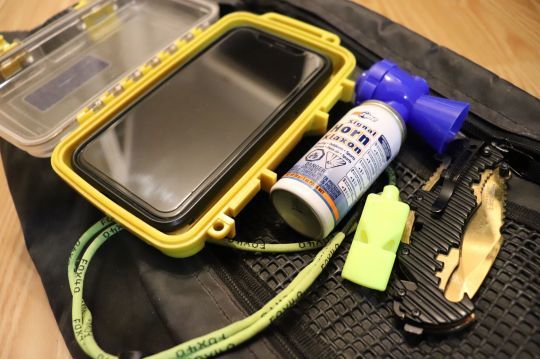
You should not see this equipment as an unnecessary burden, but as the equipment that could help you in case of problems, which you, of course, never want to use.
- a lamp with batteries
- a whistle
- a foghorn
- a cell phone in a waterproof box
- a string
- a knife
In addition, taking the pump to inflate the float tube can be useful, especially if there is any doubt about the presence of a leak.

 /
/ 

